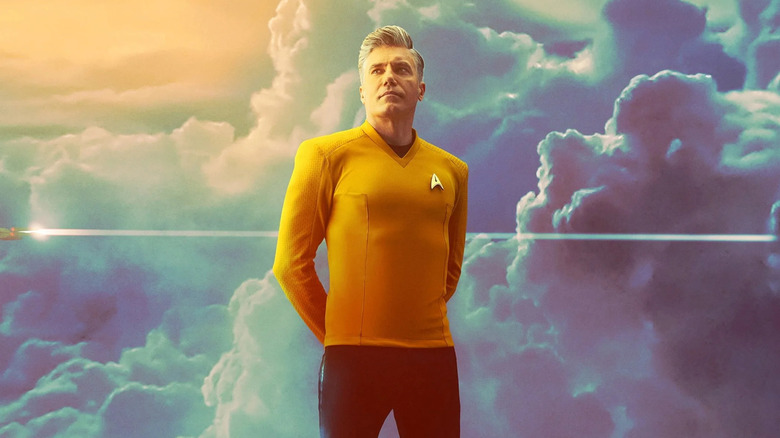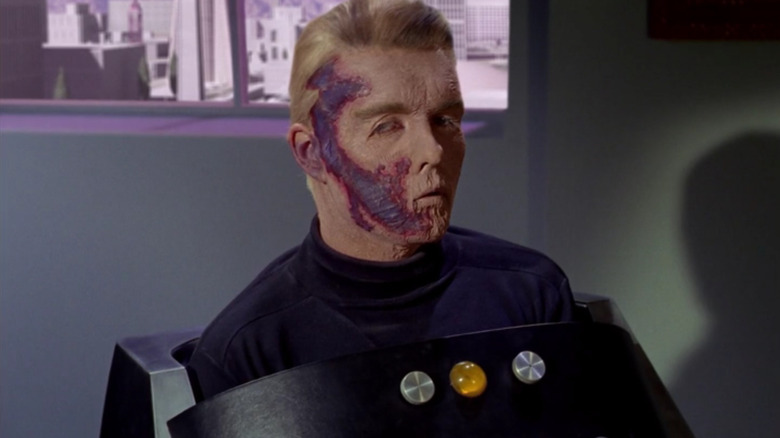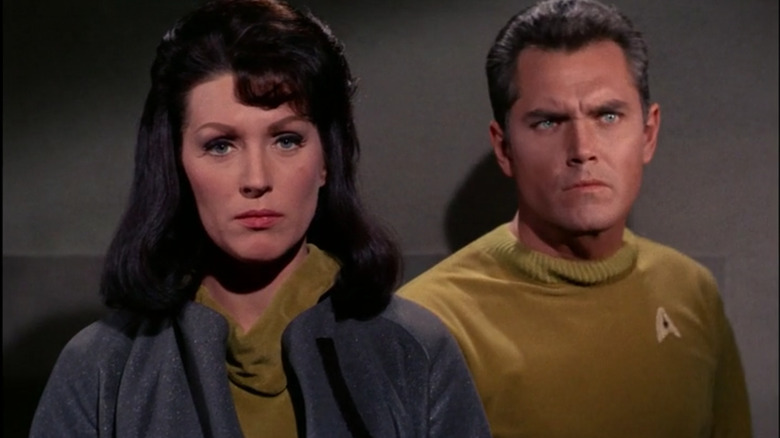Where Does Star Trek: Strange New Worlds Fit On The Trek Timeline?
With the debut of "Star Trek: Strange New Worlds" on May 5, 2022, Trekkies are now facing the fourth "Star Trek" series to take place prior to the events of 1966's "Star Trek." Over 55 years of the franchise's history, "Star Trek" has — generally speaking, and not counting multiple instances of time travel and/or parallel universes — covered a span of time that begins as early as 2151 (the time frame of "Star Trek: Enterprise") and as late as 2400 (the time frame of "Star Trek: Picard"). The most recent seasons of "Star Trek: Discovery" go beyond that point, but I'm trying to keep this simple.
The original "Star Trek" — the one with William Shatner, just to be perfectly clear — took place from 2265 to 2269. When "Star Trek: Discovery" debuted in 2017, it was originally intended to be part of a much larger, multi-season project. In an interview with Entertainment Weekly, back in 2017, original showrunner Bryan Fuller described an epic "Star Trek" series that was to take place several years prior to the original "Trek," the next season was to take place during the original "Trek," the third season during the time of "Star Trek: The Next Generation" (that is: the 2360s), and the fourth at a point in the distant future beyond the explored realm of the "Trek" timeline.
This version of "Discovery" was bowdlerized by multiple in-studio mutations and additional producers getting their thumbs into the pie, eventually making a show that was set in the mid 2250s, about a decade prior to the original series.
The first season of "Discovery" ended with a tease of the appearance of the original U.S.S. Enterprise, but at a time prior to when Captain Kirk took command of it. As such, Trekkies were introduced to a new version of Captain Christopher Pike (Anson Mount), a character first seen in the unused pilot of "Star Trek" (where he was played by Jeffrey Hunter), entitled "The Cage." Mount was so charismatic in the role, and his story was so appealing, that "Strange New Worlds" was put into production.
The Menagerie and Pike's fate
The mandate on "Strange New Worlds" seems to have been based in tradition.
"Strange New Worlds" takes places after the events of "The Cage" (2254), which were established as having already happened in the second season of "Discovery," which ended in 2258. But, the show takes place entirely prior to the events of "Star Trek: The Original Seres." Which means "Strange New Worlds," by beginning in 2258, will have to, by necessity, conclude at the end of seven years, lest it interfere with established Trek canon.
Also, Trekkies will certainly know about the original "Trek" episode "The Menagerie" (eight years after "Strange New Worlds"), a two part episode that cleverly (if not entirely creatively) re-used a lot of extant footage shot for "The Cage." In "The Menagerie," Captain Pike, now played by Sean Kenney, was seen burnt by radiation, his face scarred, his limbs perhaps absent, and his ability to speak gone. A large plot point in the second season of "Discovery" is that Pike was able to look into the future and see what he would look like during "The Menagerie." Pike now has his fate hanging over him; audiences know what's coming for the character.
To recap
So, just to be 100% clear:
"Star Trek: Strange New Worlds" takes place, in "Trek" chronology, several roughly four years after the original "Star Trek" pilot, directly after the second season of "Discovery," and seven years before 1966's "Star Trek."
For the layperson, that means a lot of familiar 1966 "Trek" iconography: Phasers, transporters, handheld communicators, shields, photon torpedoes. With Spock on the show, that means Vulcan mind melds and neck pinches as well.
"Strange New Worlds" will not contain: Holodecks, human-like androids, peaceful Klingons, ships that have families on them, nor food replicators. These were innovations that weren't introduced until "Star Trek: The Next Generation."
Given the creativity and wild tech associated with "Star Trek," however, audiences can likely prepare for some sort of technological innovation, even if it doesn't line up with the original series. After all, Trekkies need something to argue about.


